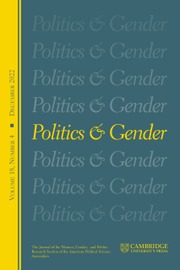No CrossRef data available.
Article contents
WPS at 25: National Action Plans as Mechanisms for Implementation of a Diverse Agenda
Published online by Cambridge University Press: 10 September 2025
Extract
United Nations Security Council Resolution (UNSCR) 1325 was adopted in October 2000, marking a historic commitment to advancing women’s participation in peace and security governance, preventing gender-based violence, protecting women’s rights and safety, and ensuring their needs are addressed in post-conflict relief and recovery efforts (Cohn, Kinsella, and Gibbings 2004). Four years after adoption of Resolution 1325, the President of the UN Security Council made a statement applauding “the efforts of Member States in implementing Resolution 1325 (2000) at the national level, including the development of national action plans” and encouraging states “to continue to pursue such implementation” (United Nations Security Council 2004, 3). National action plans (NAPs) are domestic policy documents that articulate their commitments to the implementation of the women, peace, and security (WPS) agenda,1 providing insight into the WPS interests and priorities of states.
Information
- Type
- Critical Perspectives Article
- Information
- Copyright
- © The Author(s), 2025. Published by Cambridge University Press on behalf of the Women, Gender, and Politics Research Section of the American Political Science Association

